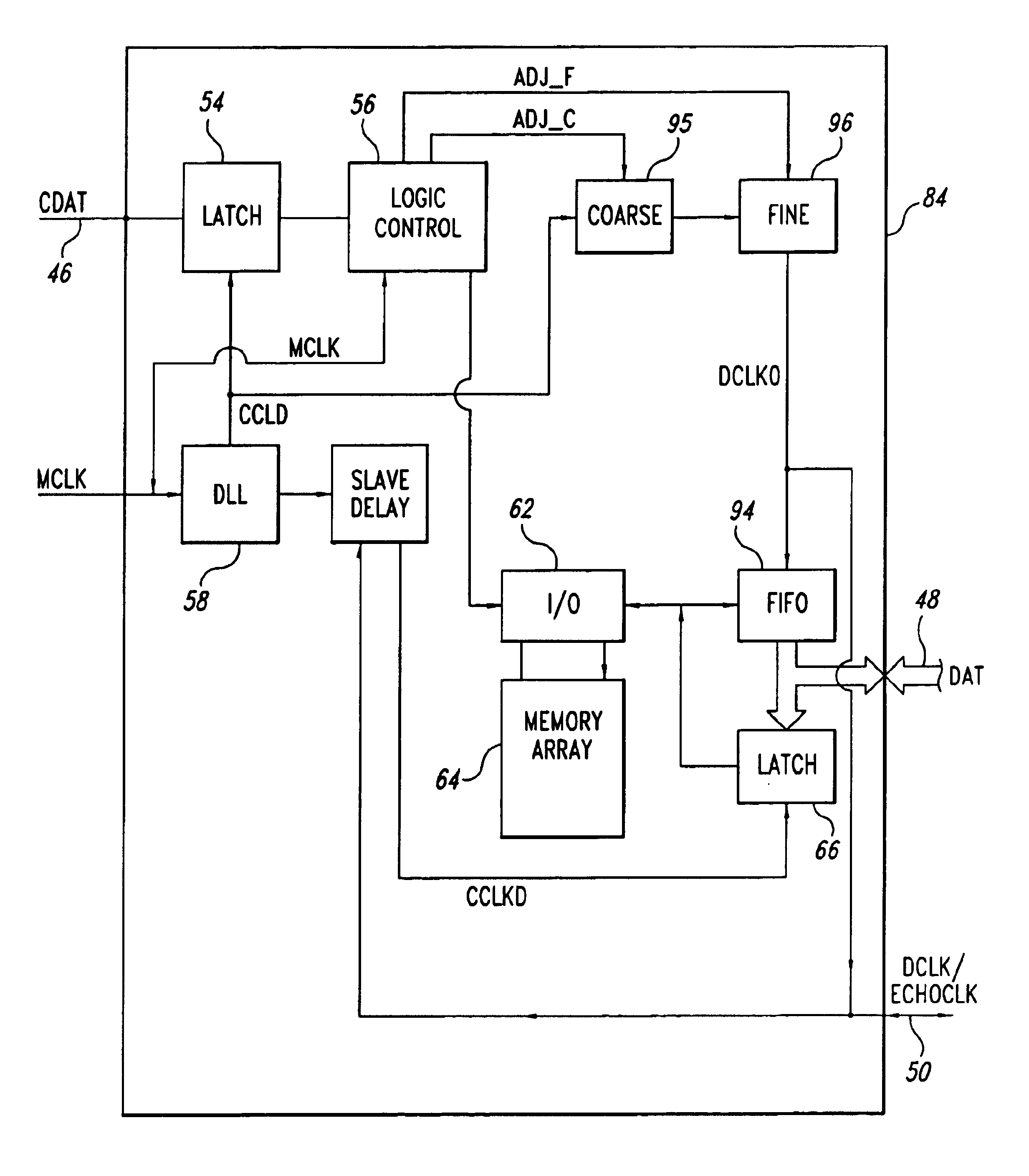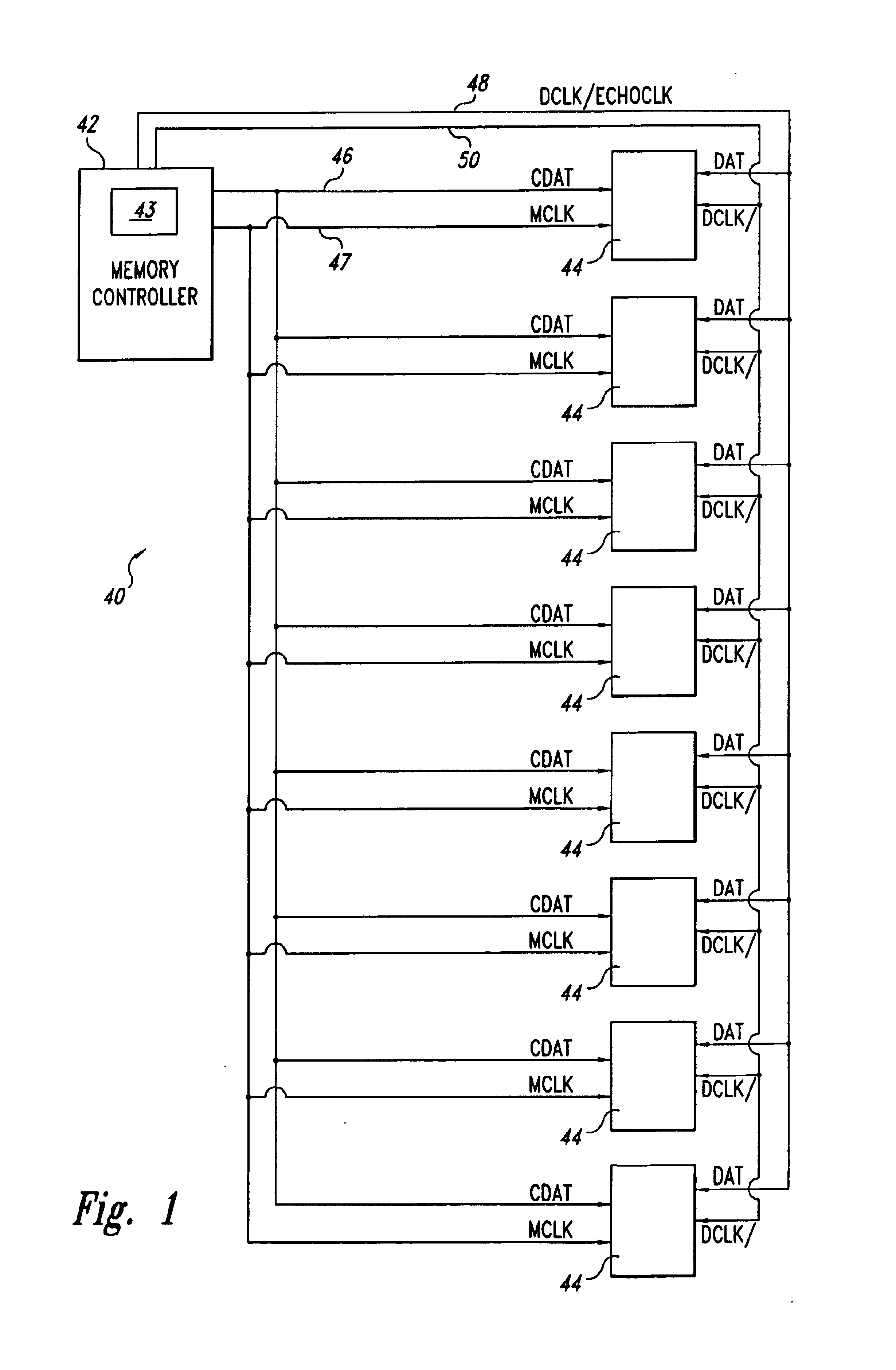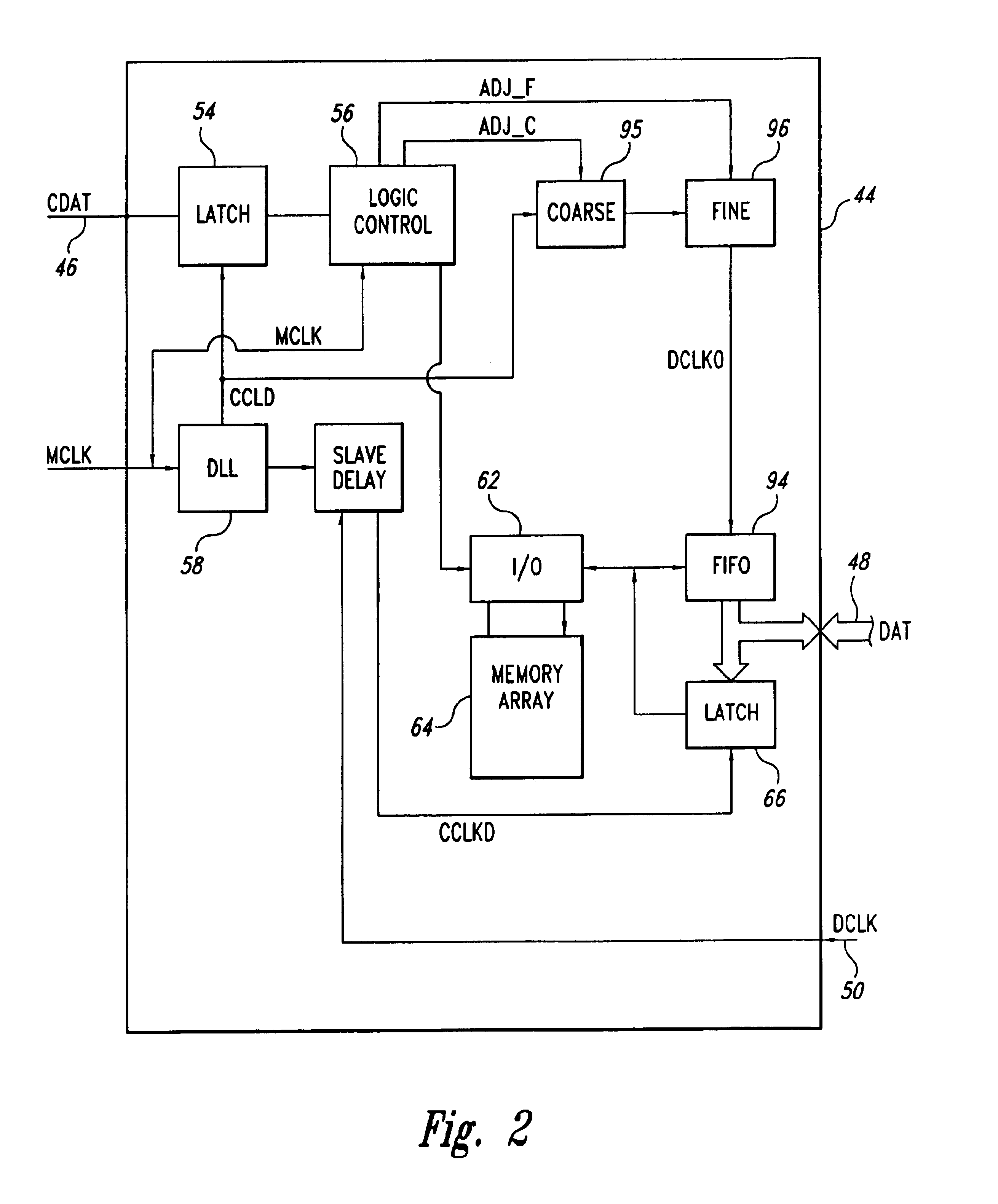Memory system with dynamic timing correction
a memory system and dynamic timing technology, applied in the field of memory systems and memory devices, can solve the problems of preventing the memory system from operating at its optimal rate, data arriving later, propagation delay between,
- Summary
- Abstract
- Description
- Claims
- Application Information
AI Technical Summary
Benefits of technology
Problems solved by technology
Method used
Image
Examples
Embodiment Construction
[0017]As shown in FIG. 1, a memory system 40 includes a memory controller 42 that controls eight memory devices 44 as directed by a logic control circuit 43. The memory devices 44 and memory controller 42 operate according to a packet protocol. According to the packet protocol, the controller 42 generates a control data packet containing control data CDAT for reading to or writing from one of the memory devices 44 or for initiating a memory event, such as reset or autorefresh. Among the control data CDAT, the data packet includes fields identifying the memory device 44 to which the packet is directed, fields containing command data, and fields containing addressing information, such as row, column, bank, or register addresses. The memory controller 42 transmits the control data packet to all of the memory devices 44 on a control data bus 46 that is coupled to control data inputs of all of the memory devices 44.
[0018]In addition to the control data packets, the memory controller 42 a...
PUM
 Login to View More
Login to View More Abstract
Description
Claims
Application Information
 Login to View More
Login to View More - R&D
- Intellectual Property
- Life Sciences
- Materials
- Tech Scout
- Unparalleled Data Quality
- Higher Quality Content
- 60% Fewer Hallucinations
Browse by: Latest US Patents, China's latest patents, Technical Efficacy Thesaurus, Application Domain, Technology Topic, Popular Technical Reports.
© 2025 PatSnap. All rights reserved.Legal|Privacy policy|Modern Slavery Act Transparency Statement|Sitemap|About US| Contact US: help@patsnap.com



